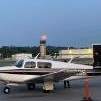How Far LOP is Too Far LOP?
-
Members Online
- LANCECASPER
- Shadrach
- bigmo
- Shiroyuki
- redrider54
- Philofficer
- 65MooneyPilot
- DCarlton
- ArtVandelay
- 201er
- Fritz1
- Blaze
- Aaviationist
- Marc_B
- hammdo
- TCC
- mooneydemi
- Bolter
- Nikolai
- catchman86
- TangoTango
- Ethan
- richardbrochu27
- jrwilson
- Rotorhead
- exM20K
- 1980Mooney
- 1967 427
- Jakes Simmons
- Mahsine Parthime
- Nukemzzz
- Meshach
- Skyland
- YeloSub
- Guy123
- MikeOH
- Tx_Aggie
- philiplane
- gabez
- rbuck
- Scooter
- T. Peterson
- Mmrkulic
- N305EP
- Supereri73
- eman1200
- FlyingDude


Recommended Posts
Join the conversation
You can post now and register later. If you have an account, sign in now to post with your account.